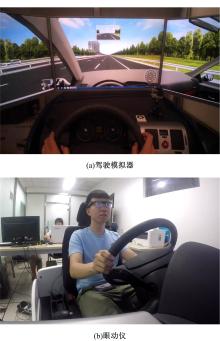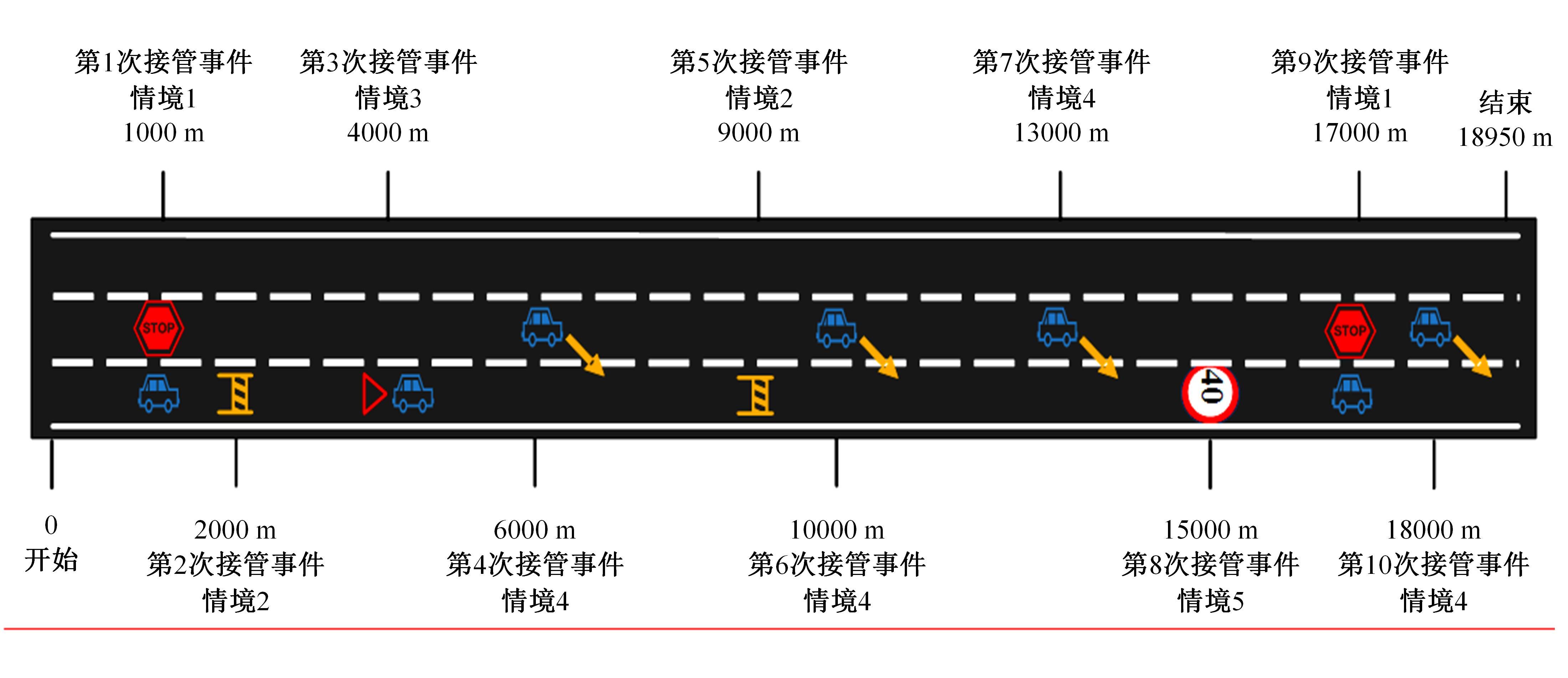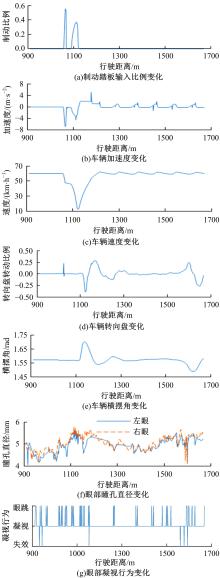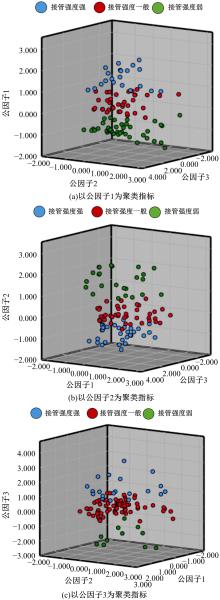Journal of Jilin University(Engineering and Technology Edition) ›› 2023, Vol. 53 ›› Issue (3): 758-771.doi: 10.13229/j.cnki.jdxbgxb20210919
Drivers' takeover behavior and intention recognition based on factor and long short⁃term memory
Rong-han YAO1( ),Wen-tao XU1,Wei-wei GUO2
),Wen-tao XU1,Wei-wei GUO2
- 1.School of Transportation and Logistics,Dalian University of Technology,Dalian 116024,China
2.Beijing Key Laboratory of Urban Intelligent Traffic Control Technology,North China University of Technology,Beijing 100144,China
CLC Number:
- U491.2
| 1 | de LaTorre G, Rad P, Choo K R. Driverless vehicle security: challenges and future research opportunities[J]. Future Generation Computer Systems, 2020, 108: 1092-1111. |
| 2 | SAE J3016—2016. Taxonomy and definitions for terms related to driving automation systems for on-road motor vehicles [S]. |
| 3 | SAE J3016—2018. Taxonomy and definitions for terms related to driving automation systems for on-road motor vehicles [S]. |
| 4 | National Highway Traffic Safety Administration. ODI resume[R]. Washington, DC: National Highway Traffic Safety Administration, 2017. |
| 5 | Lu Z J, Coster X, de Winter J C F. How much time do drivers need to obtain situation awareness? a laboratory-based study of automated driving[J]. Applied Ergonomics, 2017, 60: 293-304. |
| 6 | Endsley M R. Situation awareness global assessment technique (SAGAT)[C]∥Proceedings of the IEEE 1988 National Aerospace and Electronics Conference, Dayton, OH, USA, 1988: 789-795. |
| 7 | Samuel S, Borowsky A, Zilberstein S, et al. Minimum time to situation awareness in scenarios involving transfer of control from an automated driving suite[J]. Transportation Research Record, 2016, 2602(1): 115-120. |
| 8 | Wright T J, Samuel S, Borowsky A, et al. Experienced drivers are quicker to achieve situation awareness than inexperienced drivers in situations of transfer of control within a level 3 autonomous environment[C]∥Proceedings of the Human Factors and Ergonomics Society Annual Meeting, Los Angeles, CA, USA, 2016: 270-273. |
| 9 | Vlakveld W, van Nes N, de Bruin J, et al. Situation awareness increases when drivers have more time to take over the wheel in a level 3 automated car: a simulator study[J]. Transportation Research Part F: Psychology and Behaviour, 2018, 58: 917-929. |
| 10 | Petermeijer S M, Bazilinskyy P, Bengler K, et al. Take-over again: investigating multimodal and directional tors to get the driver back into the loop[J]. Applied Ergonomics, 2017, 62: 204-215. |
| 11 | Forster Y, Naujoks F, Neukum A, et al. Driver compliance to take-over requests with different auditory outputs in conditional automation[J]. Accident Analysis and Prevention, 2017, 109: 18-28. |
| 12 | Radlmayr J, Fischer F M, Bengler K. The influence of non-driving related tasks on driver availability in the context of conditionally automated driving[J]. Proceedings of the 20th Congress of the International Ergonomics Association, 2018, 823: 295-304. |
| 13 | Yoon S H, Ji Y G. Non-driving-related tasks, workload, and takeover performance in highly automated driving contexts[J]. Transportation Research Part F: Psychology and Behaviour, 2019, 60: 620-631. |
| 14 | Gold C, Körber M, Lechner D, et al. Taking over control from highly automated vehicles in complex traffic situations: the role of traffic density[J]. Human Factors, 2016, 58(4): 642-652. |
| 15 | Roche F, Thüring M, Trukenbrod A K. What happens when drivers of automated vehicles take over control in critical brake situations?[J]. Accident Analysis and Prevention, 2020, 144: No.105588. |
| 16 | Clark H, Feng J. Age differences in the takeover of vehicle control and engagement in non-driving-related activities in simulated driving with conditional automation[J]. Accident Analysis and Prevention, 2017, 106: 468-479. |
| 17 | Epple S, Roche F, Brandenburg S. The sooner the better: drivers' reactions to two-step take-over requests in highly automated driving[C]∥Proceedings of the Human Factors and Ergonomics Society Annual Meeting, Los Angeles, CA, USA, 2018, 62(1): 1883-1887. |
| 18 | Wiedemann K, Naujoks F, Wörle J, et al. Effect of different alcohol levels on take-over performance in conditionally automated driving[J]. Accident Analysis and Prevention, 2018, 115: 89-97. |
| 19 | Vogelpohl T, Kühn M, Hummel T, et al. Asleep at the automated wheel: sleepiness and fatigue during highly automated driving[J]. Accident Analysis and Prevention, 2019, 126: 70-84. |
| 20 | 王海星, 王翔宇, 王招贤, 等. 基于数据挖掘的危险货物运输风险驾驶行为聚类分析[J]. 交通运输系统工程与信息, 2020, 20(1): 183-189. |
| Wang Hai-xing, Wang Xiang-yu, Wang Zhao-xian, et al. Dangerous driving behavior clustering analysis for hazardous materials transportation based on data mining[J]. Journal of Transportation Systems Engineering and Information Technology, 2020, 20(1): 183-189. | |
| 21 | Zhou T, Zhang J. Analysis of commercial truck drivers' potentially dangerous driving behaviors based on 11-month digital tachograph data and multilevel modeling approach[J]. Accident Analysis and Prevention, 2019, 132: No.105256. |
| 22 | 孙剑, 张一豪, 王俊骅. 基于自然驾驶数据的分心驾驶行为识别方法[J]. 中国公路学报, 2020, 33(9): 225-235. |
| Sun Jian, Zhang Yi-hao, Wang Jun-hua. Detecting distraction behavior of drivers using naturalistic driving data[J]. China Journal of Highway and Transport, 2020, 33(9): 225-235. | |
| 23 | Jia S, Hui F, Li S N, et al. Long short-term memory and convolutional neural network for abnormal driving behaviour recognition[J]. IET Intelligent Transport Systems, 2020, 14(5): 306-312. |
| 24 | 张姝玮, 郭忠印, 杨轸, 等. 驾驶行为多重分形特征在驾驶疲劳检测中的应用[J]. 吉林大学学报: 工学版, 2021, 51(2): 557-564. |
| Zhang Shu-wei, Guo Zhong-yin, Yang Zhen, et al. Application of multi-fractal features of driving performance in driver fatigue detection[J]. Journal of Jilin University (Engineering and Technology Edition), 2021, 51(2): 557-564. | |
| 25 | 庄明科, 白海峰, 谢晓非. 驾驶人员风险驾驶行为分析及相关因素研究[J]. 北京大学学报: 自然科学版, 2007, 4: 75-82. |
| Zhuang Ming-ke, Bai Hai-feng, Xie Xiao-fei. A study on risky driving behavior and related factors[J]. Acta Scientiarum Naturalium Universitatis Pekinensis (Natural Science Edition), 2007, 4: 75-82. | |
| 26 | Child D. The Essentials of Factor Analysis[M]. London: Cassell Educational, 1990. |
| 27 | Kaiser H F. The varimax criterion for analytic rotation in factor analysis[J]. Psychometrika, 1958, 23 (3): 187-200. |
| 28 | Macqueen J. Some methods for classification and analysis of multivariate observations[C]∥Proceedings of Berkeley Symposium on Mathematical Statistics and Probability, Berkeley, CA, USA, 1967: 281-297. |
| 29 | Sun H D, Chen Y Y, Lai J H, et al. Identifying tourists and locals by K-means clustering method from mobile phone signaling data[J]. Journal of Transportation Engineering, Part A: Systems, 2021, 147(10): No.04021070. |
| 30 | Hochreiter S, Schmidhuber J. Long short-term memory[J]. Neural Computation, 1997, 9(8): 1735-1780. |
| 31 | 赵申剑, 黎彧君, 符天凡, 等 译. 深度学习[M]. 北京: 人民邮电出版社, 2017. |
| [1] | Xue XIAO,Ke-ping LI,Bo PENG,Man-wei CHANG. Integrated lane⁃changing model of decision making and motion planning for autonomous vehicles [J]. Journal of Jilin University(Engineering and Technology Edition), 2023, 53(3): 746-757. |
| [2] | Min MA,Da-wei HU,Lan SHU,Zhuang-lin MA. Resilience assessment and recovery strategy on urban rail transit network [J]. Journal of Jilin University(Engineering and Technology Edition), 2023, 53(2): 396-404. |
| [3] | Jing WANG,Feng WAN,Chun-jiao DONG,Chun-fu SHAO. Modelling on catchment area and attraction intensity of urban rail transit stations [J]. Journal of Jilin University(Engineering and Technology Edition), 2023, 53(2): 439-447. |
| [4] | Song FANG,Jian-xiao MA,Gen LI,Ling-hong SHEN,Chu-bo XU. Traffic risk analysis of moving work zone on right lane of city expressway [J]. Journal of Jilin University(Engineering and Technology Edition), 2022, 52(8): 1786-1791. |
| [5] | Song-xue GAI,Xiao-qing ZENG,Xiao-yuan YUE,Zi-hao YUAN. Parking guidance model based on user and system bi⁃level optimization algorithm [J]. Journal of Jilin University(Engineering and Technology Edition), 2022, 52(6): 1344-1352. |
| [6] | Hong-feng XU,Hong-jin CHEN,Dong ZHANG,Qian-hui LU,Na AN,Xian-cai Geng. Fully⁃actuated signal timing technique for isolated signalized intersections in connected vehicle environment [J]. Journal of Jilin University(Engineering and Technology Edition), 2022, 52(6): 1324-1336. |
| [7] | Guo-zhu CHENG,Qiu-yue SUN,Yue-bo LIU,Ji-long CHEN. Cut⁃in behavior model based on game theoretic approach on urban roads [J]. Journal of Jilin University(Engineering and Technology Edition), 2022, 52(12): 2839-2844. |
| [8] | Heng-yan PAN,Wen-hui ZHANG,Bao-yu HU,Zun-yan LIU,Yong-gang WANG,Xiao ZHANG. Construction and robustness analysis of urban weighted subway⁃bus composite network [J]. Journal of Jilin University(Engineering and Technology Edition), 2022, 52(11): 2582-2591. |
| [9] | Zhuang-lin MA,Shan-shan CUI,Da-wei HU. Urban residents' low⁃carbon travel intention after implementation of driving restriction policy [J]. Journal of Jilin University(Engineering and Technology Edition), 2022, 52(11): 2607-2617. |
| [10] | Jing-xian WU,Hua-peng SHEN,Yin HAN,Min YANG. Residents' commuting time model under the nonlinear impact of urban built environment [J]. Journal of Jilin University(Engineering and Technology Edition), 2022, 52(11): 2568-2573. |
| [11] | Jie MA,Jia-jun HUANG,Jun TIAN,Yang-hui DONG. Simulation modeling of pedestrian target decision⁃making in evacuation process in transfer corridors of subway stations [J]. Journal of Jilin University(Engineering and Technology Edition), 2022, 52(11): 2600-2606. |
| [12] | Feng XUE,Chuan-lei HE,Qian HUANG,Jian LUO. Coordination degree of multimodal rail transit network [J]. Journal of Jilin University(Engineering and Technology Edition), 2021, 51(6): 2040-2050. |
| [13] | Bo PENG,Yuan-yuan ZHANG,Yu-ting WANG,Ju TANG,Ji-ming XIE. Automatic traffic state recognition from videos based on auto⁃encoder and classifiers [J]. Journal of Jilin University(Engineering and Technology Edition), 2021, 51(3): 886-892. |
| [14] | Dian-hai WANG,Xin-yi SHEN,Xiao-qin LUO,Sheng JIN. Offset optimization with minimum average vehicle delay [J]. Journal of Jilin University(Engineering and Technology Edition), 2021, 51(2): 511-523. |
| [15] | Xian-min SONG,Ming-ye ZHANG,Zhen-jian LI,Xin WANG,Ya-nan ZHANG. Setting of dynamic bus lane and its simulation analysis and evaluation [J]. Journal of Jilin University(Engineering and Technology Edition), 2020, 50(5): 1677-1686. |
|
||











